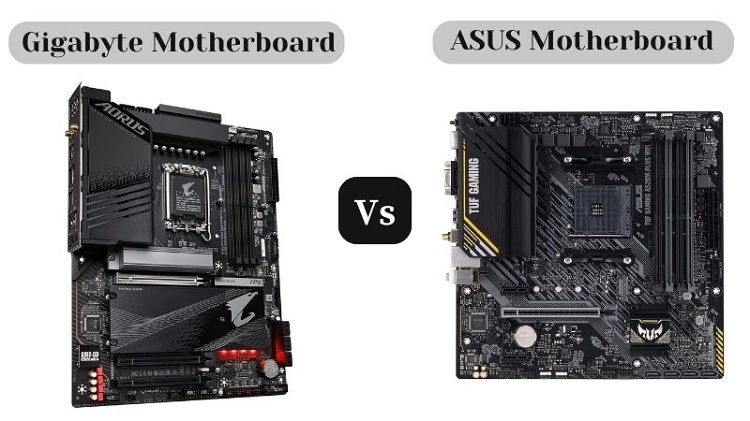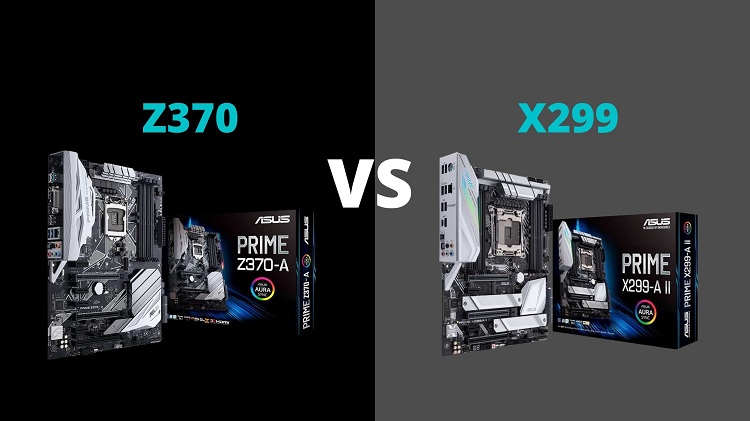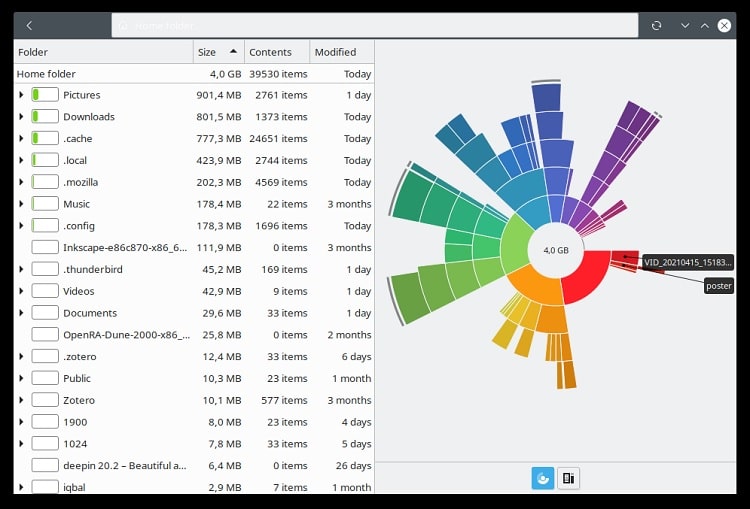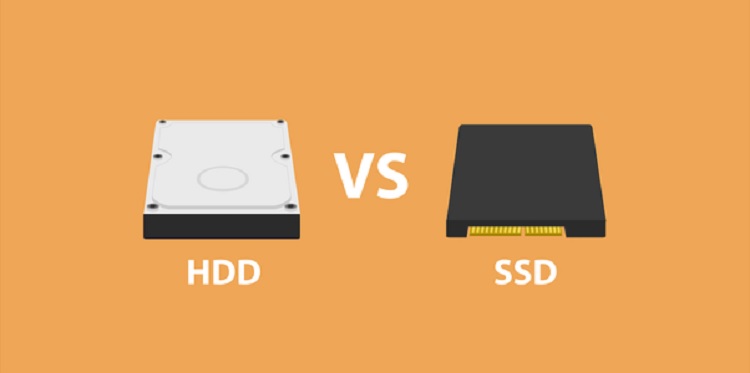Gigabyte Vs ASUS Motherboard Comparison: What Is The Difference & Which Is Better (Updated)
One of a computer’s most important parts is the motherboard, which acts as the hub that connects all of the hardware parts together and promotes system performance.
Choosing an appropriate motherboard is crucial when building or renovating a computer. Notably, Asus and Gigabyte are well-known worldwide brands that are well-known for their motherboard development.
Both Gigabyte and Asus have a wide range of motherboards, which speaks to their dedication to providing customers with high-quality and powerful products.
Prospective purchasers frequently find themselves deliberating over the brand to choose when making a motherboard purchase.
By providing in-depth analyses of these two brands and illuminating their features and attributes, this article will explain to you Gigabyte Vs ASUS Motherboard: Which Is Better.
Gigabyte Motherboards
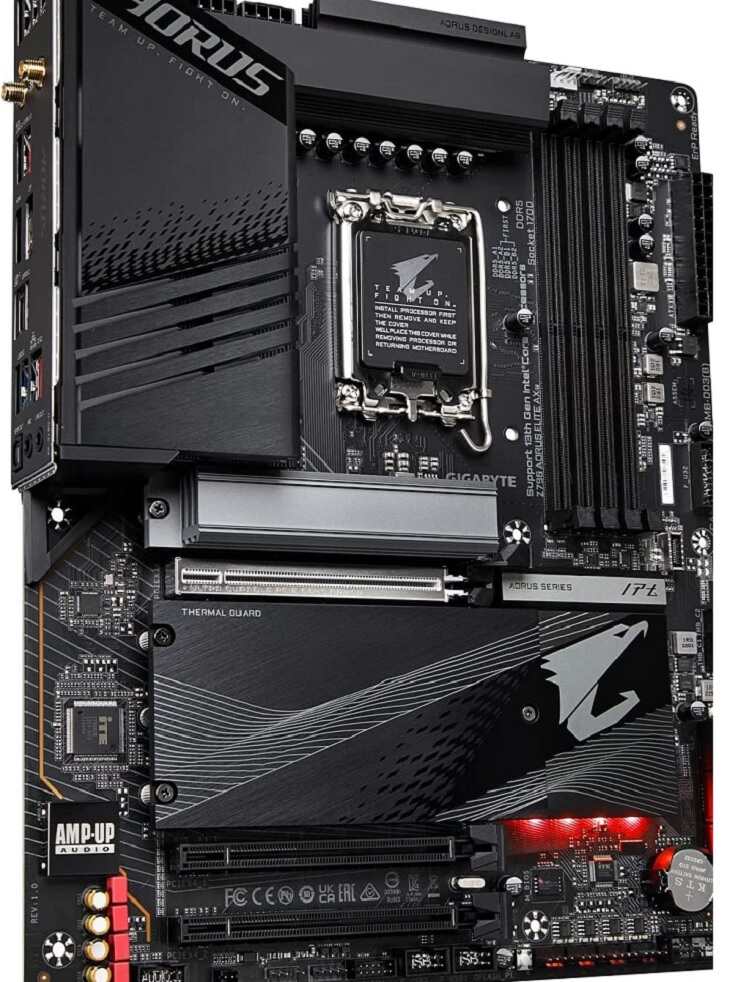
Gigabyte is one of the leading producers of several computer hardware parts and is well-known to consumers who value performance.
Gigabyte is well-known for its dedication to providing outstanding performance and a wide selection of products with cutting-edge features.
Apart from serving the market for high-end motherboards, Gigabyte has broadened its line of products to encompass options designed for the midrange and budget categories.
Gigabyte’s flagship motherboard series, the Aorus series, is at the front of the lineup. These motherboards are built to function well under demanding circumstances and are engineered for durability.
Gigabyte offers the Gaming motherboard line, which strikes a mix of performance and price for the mid-range market.
Gigabyte extends its guarantee of dependable performance to customers on a budget with its Ultra-Durable (UD) series motherboards.
Asus Motherboards
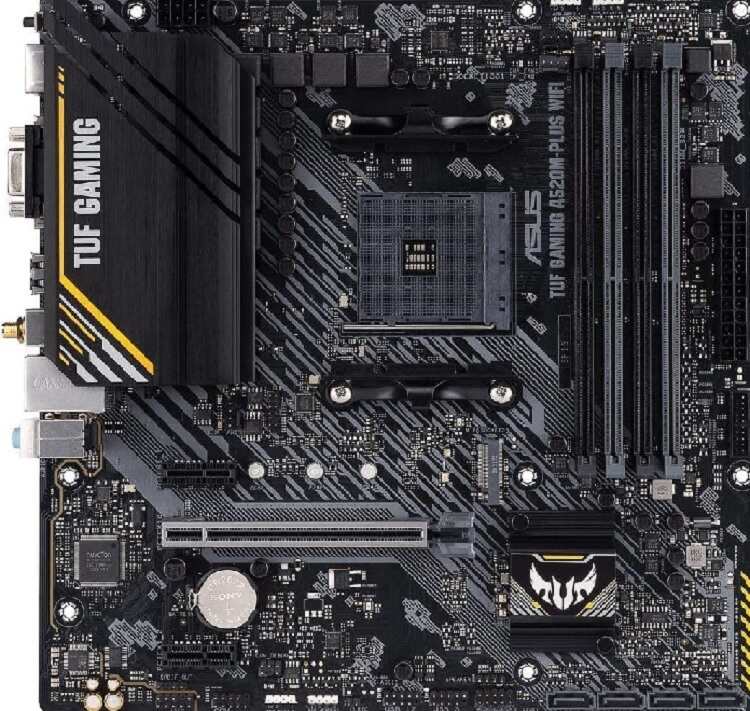
On the other hand, Asus is a reputable brand in the computer accessory and component market, having won a lot of praise for the features and performance of its product range.
Because of their superior quality, Asus products are more durable overall, which adds to the brand’s appeal. Like Gigabyte, Asus offers a wide selection of motherboards to suit different market niches.
Asus presents its ROG motherboard series as a flagship product designed for customers with high-performance demands. It is painstakingly tuned to achieve the best performance.
Another product from Asus that appeals to customers looking for excellent performance without going overboard is the TUF series.
Asus offers a collection of products called PRIME that are affordable and ideal for do-it-yourselfers and budget-conscious people.
Comparison Between Gigabyte Vs ASUS Motherboard
Both Gigabyte and Asus offer a wide selection of motherboards that are competitively performing, catering to different market niches.
Even while both brands perform similarly, there are notable differences between them that could affect consumers’ choices.
In order to compare important motherboard specifications with knowledge, one must examine the features of the most recent models from both Gigabyte and Asus, as well as the subtle differences between them.
In this part, key specifications of the latest motherboards from Gigabyte and Asus will be covered in detail.
What Is an ASUS Motherboard Best For?
With eight different motherboard ranges, ASUS motherboards are highly regarded for their aesthetically pleasing design and distinctive charm.
Among these products are noteworthy motherboards designed for gamers, such as ROG, TUF Gaming, and Pro Gaming.
The motherboard lineup from ASUS is also praised for being a financially responsible alternative, which makes it a great choice for people on a tight budget.
Overall, ASUS motherboards are very competitive when it comes to value for money, especially for gamers looking for the best possible configuration.
These motherboards are essential for boosting processor and graphics card performance, guaranteeing smooth operation, or reducing possible inefficiencies.
Additionally, ASUS provides a variety of motherboard models, including ProArt, ASUS Prime, and TUF, which are ideal for routine computer operations and provide a smooth user experience.
ASUS offers commercial workstation motherboards for business users, ensuring the best possible experience for laptop users using laptops for work.
The cost-effectiveness of ASUS merchandise, particularly its motherboards, accommodates individuals with limited financial resources.
Some ASUS motherboard models come equipped with notable features like thunderbolts and technology support, which improve overall device functionality.
Furthermore, ASUS motherboards deliver outstanding multicore performance, which enhances the computing experience.
Advantages of ASUS Motherboards
- A visually appealing design that makes your gaming setup look better.
- Exceptional support for high-end gaming and flawless assembly.
- Optimises CPU clock rates to improve efficiency.
Disadvantages of ASUS Motherboards
Even though the disadvantages are small in comparison to the advantages, the following should be understood:
- It is not suited for usage in computer servers since it is not durable enough for frequent use.
1. Design
It becomes essential to investigate other ASUS motherboard models for those who value both style and functionality. Sleek computer components may be important to some users, but not everyone may find them to be so.
ASUS motherboards are notable for their exceptional value, fusing elegant designs with well-chosen color schemes. The visual beauty of ASUS motherboards enhances the user’s computer or gaming experience and adds to their overall attractiveness.
2. Ultra-Durability
Due to the incredibly robust components used in their construction, ASUS motherboards are very reliable. Contributing to ultra-performance and greater durability, the incorporation of sulfur resistors improves the design’s stability.
A notable example of a motherboard series specifically designed with gaming needs in mind is the ASUS ROG line. Furthermore, these motherboards come equipped with the most sophisticated control center in the industry.
3. Software Performance
One of ASUS’s best-performing motherboard models, the Maximus XII Hero Z490, promises dependable overall performance and quicker CPU operation. This motherboard is faster than its counterparts and is particularly heat-resistant.
A sophisticated overclocking and cooling mechanism is built into almost all ASUS motherboards, guaranteeing long-lasting and effective gadget performance.
These motherboards meet the needs of continuous use, which is especially advantageous for content creators who use their PCs for long periods of time.
4. Working System
A wide variety of operating systems are supported by ASUS motherboards, which enables the PC to respond quickly and effectively. They offer a very useful operating system that is necessary to keep computers functioning flawlessly.
These motherboards exhibit stability and interoperability across multiple Windows versions, guaranteeing precise control and intuitive functioning. Since there are no compatibility problems, these motherboards can be used with a variety of PC brands.
5. Gaming Motherboards
When it comes to providing cutting-edge gaming support technologies, both Gigabyte and ASUS excel. Their extremely responsive motherboards add to the exceptional performance of their games.
Other ASUS motherboards, such as the TUF series, offer an amazing gaming experience, but the RAM-supporting ROG Strix models stand out in particular.
The ASUS motherboard series demonstrates a strong dedication to gaming innovation, guaranteeing top-notch performance for gamers.
Categories of ASUS Motherboards
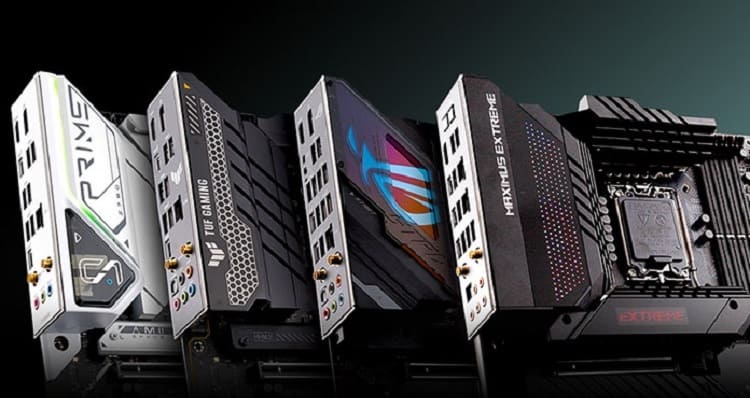
ASUS provides a wide range of motherboards in eight different categories:
1. ROG, TUF Gaming, and Pro Gaming Motherboards:
Designed especially for intense gaming, these motherboards offer the best possible performance for running modern titles such as high-end first-person shooters.
2. ProArt, ASUS Prime, and TUF Motherboards:
These motherboards are made to perform well in routine computer operations and are intended to provide a more dependable and seamless user experience.
3. Workstation and Commercial Motherboards:
As the last two categories, ASUS expands the range of motherboards it offers to meet the demands of workstation-level performance and commercial users.
What Is Gigabyte-Motherboard Best For?
Gigabyte motherboards are known for their exceptional performance and wide range of connectivity, satisfying a variety of customer needs.
The business takes great satisfaction in producing goods of superior quality that work well in a range of settings. Motherboards from Gigabyte are categorized into five different groups.
Example of a Gigabyte Motherboard
Consider the AORUS motherboard series, which was created especially for gaming. These motherboards meet the demands of resource-intensive games by providing optimal performance.
Gigabyte gaming motherboards, which are priced in the middle, provide a cost-effective choice for gamers and work well with a variety of high-end games.
As the communication basis for every server component, Gigabyte motherboards function exceptionally well in server PCs.
The motherboard, which serves as the server’s technological interpreter and facilitator, is essential to maintaining open lines of communication between important parts and boosting the computer’s overall performance.
In contrast, server motherboards usually have two CPUs, which gives you more cores to tackle more complex computations.
On the other hand, embedded or Internet of Things motherboards are designed with internet connections as their first priority for on-board computers.
These motherboards provide enhanced connectivity between the PC and other internet components and provide maximum functionality over internet connections.
Advantages of Gigabyte Motherboards
- Extremely powerful and efficient server computers that demonstrate robustness under prolonged use.
- Produces motherboards at a range of price points to meet the demands of various users.
- Provides top-notch customer care, guaranteeing that people get help when they need it.
- Offers an ideal balance between price and quality, producing motherboards that are highly functional even though they are comparatively more expensive.
- Features a strong and durable construction, increasing the motherboards’ overall longevity.
Disadvantages of Gigabyte Motherboards
- When compared to ASUS motherboards, the support software for these motherboards is inadequate.
1. Design
Gigabyte motherboards are widely accessible in the market, yet opinions on their aesthetic appeal may vary. Nonetheless, the unique 3D model of these motherboards makes them stand out in the market and adds to their remarkable appeal.
2. Ultra-Durability
Gigabyte offers really sturdy motherboards that are renowned for their durability and incredibly dependable services.
These motherboards perform exceptionally well under difficult circumstances, which makes them the best option for gadgets that need to run for longer periods of time, such as laptops or desktop PCs.
Gigabyte motherboards are designed to deliver dependable and long-lasting performance through the use of several temperature controls that efficiently regulate each component’s cooling system.
This methodical procedure ensures that none of the motherboard’s components will exceed the acceptable temperature ranges.
3. Software Performance
Gigabyte motherboards offer dependable performance and highly functional software out of the box. Although their usefulness is praiseworthy, it is important to remember that they could perform less quickly than ASUS motherboards, which are distinguished by their superior utility and security features.
4. Working Systems
Gigabyte motherboards come with BIOS and drivers that are optimized to work with Windows operating systems.
These incredibly robust motherboards are especially good for Windows 10, as they are compatible with the device’s operating system settings and have increased robustness.
Gigabyte motherboards, which are designed for professional use, provide an ideal operating system with a focus on robust performance and dependability.
Gigabyte Motherboard Categories
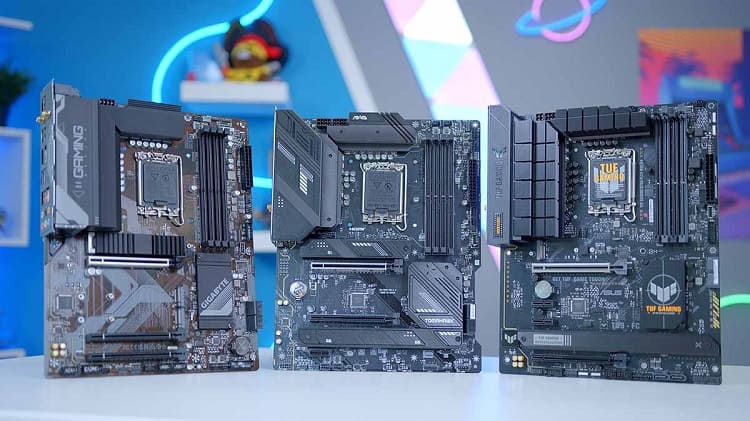
To meet the varied needs of its customers, Gigabyte divides its motherboards into five categories:
1. AORUS Motherboards:
Designed with gamers in mind, the AORUS line has an emphasis on optimal performance to improve gameplay, especially during high-stress situations.
2. Gigabyte Gaming Motherboards:
These motherboards, which are priced in the middle, are designed for players who want a basic gaming experience that is dependable in terms of both performance and functionality.
3. Ultra-Durable Motherboards:
Gigabyte designed these motherboards to be the most dependable in the field, highlighting lifespan and dependability even in the most trying circumstances.
4. Server/Workstation Motherboards:
These motherboards are the foundation of effective server operations and are made especially for server systems.
5. IoT and Embedded Motherboards:
Designed to address the unique needs of embedded systems and Internet of Things (IoT) devices, these motherboards are perfect for on-board computers that prioritize internet access.
Conclusion
Many aspects are at play when comparing Gigabyte Vs ASUS Motherboard, so it’s important to carefully consider your options in order to choose the best one.
Both manufacturers offer a wide variety of models with unique characteristics, highlighting the significance of matching your tastes with the motherboard’s capabilities.
In terms of software, Gigabyte provides more simple utilities, while ASUS stands out with more extensive options. Motherboards from ASUS and Gigabyte are often priced similarly, while ASUS motherboards typically come with more functionality for the money.
The two brands’ warranties also set them apart; ASUS offers a standard 3-year warranty, while Gigabyte offers a 2-year warranty.
Furthermore, ASUS offers round-the-clock customer assistance, which improves the overall client experience. Choosing an ASUS motherboard becomes advantageous if you value a longer warranty and better customer service.
faqs
How should a processor’s motherboard be selected?
Selecting a motherboard for a CPU requires taking a number of things into account. Assuring compatibility with the processor—including a compatible CPU socket—is essential.
For the fastest possible data transmission, the motherboard should also be able to accommodate the newest RAM and storage devices. Features such as display support and connectivity technologies need to match the specifications of the CPU.
How is a motherboard maintained?
Although it’s sometimes disregarded, proper motherboard care is crucial for longevity. It needs routine cleaning, roughly every three to six months, to get rid of accumulated dust and dirt.
Other maintenance chores include temperature monitoring, driver upgrades, audio and visual inspections, and stable power supply assurance to maintain the motherboard’s performance.
Which motherboard brand is the most dependable?
A motherboard’s dependability depends on the brand’s development and production procedures. Brands that spend money on high-quality materials and thorough research and development frequently guarantee increased dependability.
Although Gigabyte and the more established Asus both have a good reputation for quality, the decision ultimately comes down to personal taste.
How long do ASUS and Gigabyte motherboards last?
Gigabyte and ASUS place a strong emphasis on quality control and extensive testing to ensure the longevity of their motherboards.
A well-maintained motherboard can usually last five to eight years with the right care and use. Longevity is influenced by a steady power supply, premium parts, and frequent driver upgrades.
How come ASUS motherboards are so well-liked?
Numerous factors contribute to the popularity of ASUS motherboards. The brand has a solid reputation for dependability and performance thanks to its lengthy history of introducing high-quality products and its position in the computer hardware market.
ASUS ensures that users may discover appropriate solutions for developing efficient systems by offering a wide range of products in multiple areas. Outstanding post-purchase assistance is another factor in ASUS’s appeal to customers.
Can my motherboard be changed without erasing all of my data?
It is generally not advised to replace your motherboard without first backing up your data. Make sure to back up all of your data before formatting and reinstalling your operating system on your drive.
It is a good idea to keep a backup of all of your vital data, even if you do not intend to use the same motherboard again.
Which ASUS and Gigabyte motherboards’ software features differ most from one another?
In general, ASUS offers a wider range of software alternatives with more utilities and functionalities than Gigabyte. Users ought to assess particular software features according to their requirements.
In building my PC, is it possible for me to combine parts from Gigabyte and ASUS?
Compatibility across multiple brands of components is generally present. If you combine ASUS and Gigabyte components in a PC build, be sure they work well together and verify compatibility for best performance.
What warranty options do ASUS and Gigabyte provide for their motherboards?
Gigabyte gives a 2-year warranty, while ASUS normally offers a standard 3-year guarantee. ASUS might appeal more to users who want a longer warranty.

